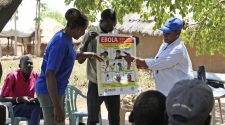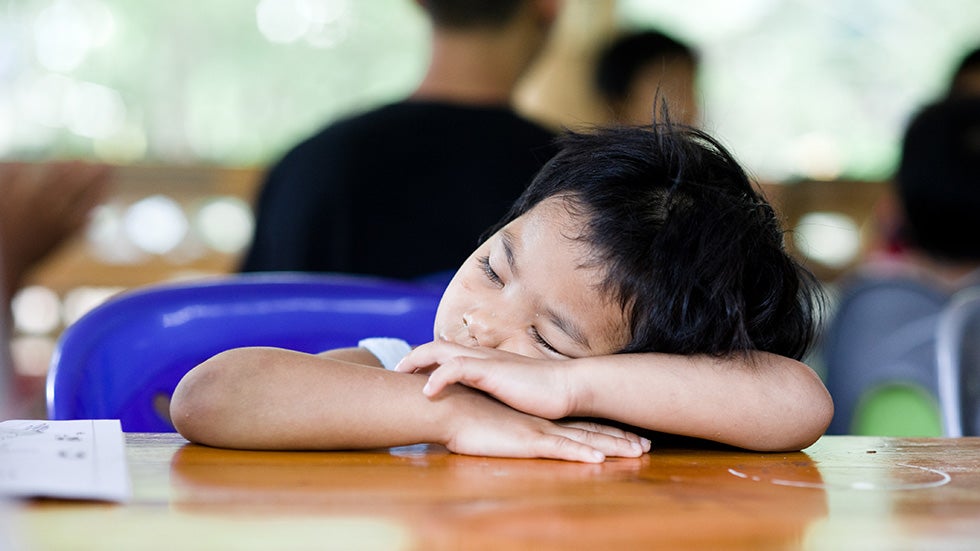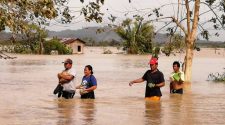A report published this week from the Centers for Disease Control (CDC) should give us all pause. U.S. adults who lived through adverse childhood experiences have a higher likelihood of dying from five of the top 10 leading causes of death. This is horrible news, for sure. But, it builds on decades of research documenting the pernicious effects of childhood trauma, and efforts to prevent this public health problem.
The ground-breaking study that started this line of investigation was published in 1998. A survey containing a list of seven categories of adverse childhood experiences (ACEs) — experiencing psychological, physical, or sexual abuse; witnessing violence against one’s mother; or living with household members who were substance abusers, mentally ill, suicidal, or ever imprisoned — was mailed to over 13,000 adults who had completed a medical evaluation at a large health maintenance organization.
More than half of people surveyed reported that they had experienced at least one ACE, and one-fourth reported two or more categories of childhood exposures.
That study went much further, however. The researchers documented how having a history of childhood trauma was associated with an increased risk of a number of mental and physical health problems later on in life. And, this wasn’t just based on self-report.
It was grounded on documentation of disorder in one’s medical records. For example, individuals who had experienced four or more categories of childhood trauma had significantly increased health risks for alcoholism, drug abuse, depression, severe obesity, ischemic heart disease, cancer, chronic lung disease, skeletal fractures, and liver disease. Seriously. Mind-blowing, if you let that sink in.
Since then, tons of studies have been conducted in the U.S. and abroad documenting how traumatic events that occur early in life can lead to significant negative social, behavioral, and physical outcomes, from major mental and physical health disorders to problem drinking and drug use, and a host of other difficulties, including suicide.
Indeed, ACEs are a well-documented risk factor for suicidality. In fact, for every increase in the number of ACEs experienced, the risk of future suicide attempts increased by 60 percent. If that’s not a jaw-dropping statistic that demands attention and action, I don’t know what is.
In addition to having insidious effects later in life, the effects of trauma can be seen as early as childhood and kindergarten. For instance, experiencing three or more ACEs is associated with below-average language, literacy and math skills, attention problems, social problems, and aggression. Children with adverse childhood experiences also have higher rates of criminal justice involvement.
You might be reading this and think, “Holy G-d, why did I not know about this?” or “Why is no one doing anything about this?”
As a trauma psychologist, let me tell you, a lot is being done. But, much work remains.
Dr. Lisa Amaya-Jackson, professor at Duke University and Deputy Director of the internationally-regarded National Center for Child Traumatic Stress, shared how the ACE findings translate into real-world change. “We have built on the ACE movement to “go from awareness to action” in bringing the trauma-informed care approach into the many child-serving systems of care. We have trauma-informed assessments that allow clinicians to measure distress and impaired functioning for which we can then target the right evidence-based interventions and treatments that allow children and their families to heal and recover from consequences of trauma.”
She’s right. There are interventions to provide parenting education, social service referrals, or social support that can reduce the impact of ACEs on child mental and behavioral health problems. These include helping parents understand the pernicious effects of traumatic stress, how trauma has negatively influenced their lives, and how they can prevent and buffer the effects of trauma in their child’s life. There are interventions that can help parents learn to more effectively regulate their emotions, develop a sense of competence, engage in better problem-solving, and demonstrate warmth towards their child.
I asked Dr. Debra Kaysen, a professor at Stanford University and president-elect of the International Society for Traumatic Stress Studies (ISTSS), a professional organization that promotes advancement and exchange of knowledge about trauma, what the new CDC report means to her. “Given the data on multi-generational transmission of trauma exposure and its long-term effects on physical and mental health, preventing childhood trauma is a way of breaking that cycle,” she said. “As someone who works with adults, we can treat the mental health impacts of childhood trauma and have highly effective interventions, but we can’t turn back time. We can’t get them the lost years back. Intervening early or preventing trauma exposure entirely can help mitigate those long-term harms.”
Dr. Julian Ford, professor at the University of Connecticut and current president of ISTSS echoed those sentiments. “Making kids’ lives safer – at home, in school, in the community – is a crucial investment in our future, and a moral responsibility of the first order.
Unless we dedicate ourselves and our institutions to protecting children, adversity and trauma will have after-effects on health and well-being that extend well beyond the present, creating a historical legacy of harm for generations to come. We must also continue our efforts to provide children, families, and communities with evidence-based therapeutic programs so that recovery and resilience are possible for every child who is confronted by adversity.”
Without a doubt, child trauma is the single most predictable and preventable cause of disorder and related difficulties in social/occupational functioning. Some believe that taking action on adverse childhood experiences may be the greatest opportunity we have to prevent chronic physical diseases and suicide, as well as reduce the burden of mental disorders.
I agree. And, I think it’s important to connect this new CDC report, and the insights made by these internationally-recognized trauma experts, with the broader social determinants of health literature. The WHO Commission on the Social Determinants of Health reminds us that social factors, such as the environments in which children are born, raised, and grow, greatly shape health outcomes. In order to improve individuals’ lives, we need to break the cycle of ACEs and combat health inequities. This is a public health issue of global concern and for global action.
According to Dr. Ford, “The theme of the annual meeting of the International Society for Traumatic Stress Studies this November in Boston, is to defend childhood and enable trauma survivors to restore their lives.”
I’ll be in Boston in November. Who will join me?
Joan Cook is a psychologist and associate professor at Yale University who researches traumatic stress and clinically treats combat veterans, interpersonal violence survivors and people who escaped the former World Trade Center towers on 9/11.
















